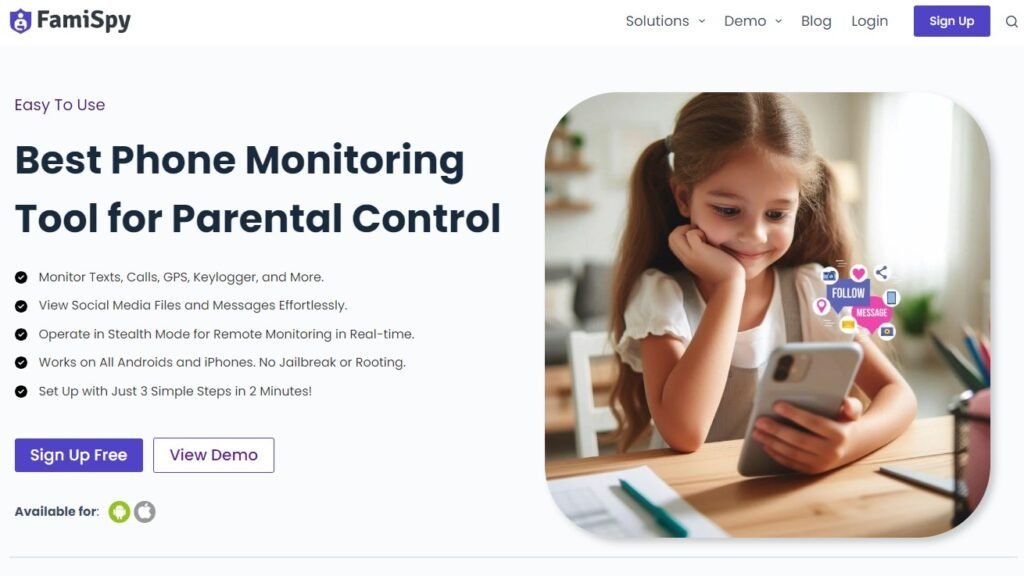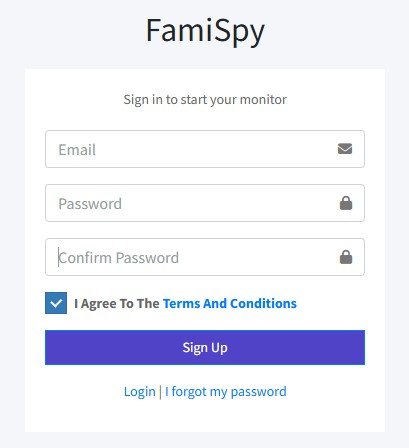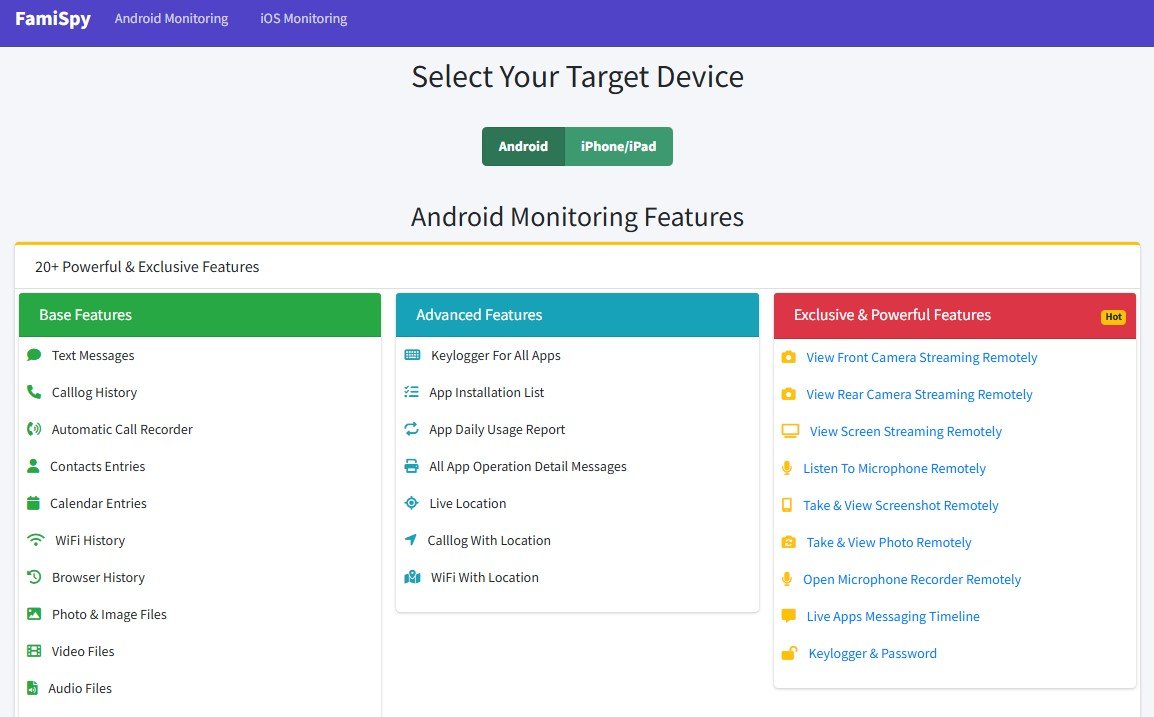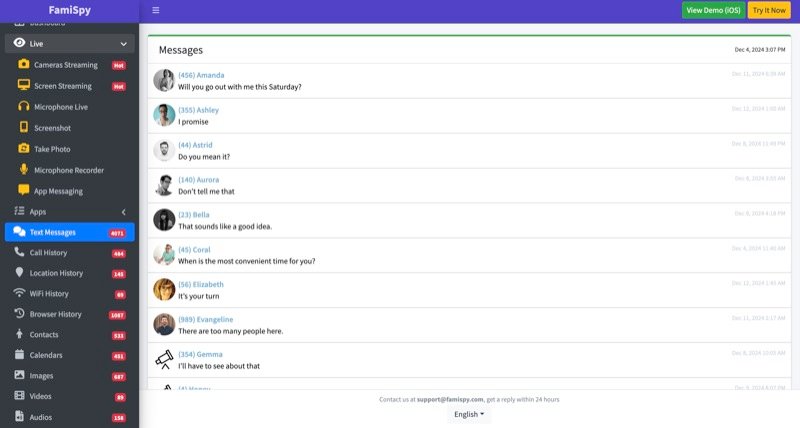Have you ever glanced at your child’s phone and seen a quick “YW” in their texts, leaving you wondering? You’re not alone. In most cases, the meaning of YW is simply “You’re Welcome.” But as with most teen slang, the story doesn’t end there. The real meaning can change completely depending on whether it’s in a simple text message or a comment on Snapchat.
This guide will break down everything you need to know about YW. We’ll cover its simple definition, its different meanings on social media, and the hidden uses that every parent should be aware of. Understanding this simple two-letter acronym is a great first step toward bridging the digital communication gap and keeping your kids safe online.

Is Their “YW” Polite, or is it “Yeah, Whatever?”
The true meaning of “YW” lies in the context. FamiSpy provides full chat history and conversation context so you can judge your child’s true tone and their social interactions.
VIEW DEMOYW Meaning in Text: The Quick and Common Uses
In the world of text messages and direct messaging apps like WhatsApp or Messenger, speed is everything. Slang exists to make communication faster, and YW is a classic example of this.
The Primary Meaning: “You’re Welcome”
Nine times out of ten, when you see YW in a text conversation, it is a polite and speedy reply to “thank you.” It’s the digital equivalent of a quick nod and a smile.

Example:
Teen 1: Hey, thanks for sending me the homework notes!
Teen 2: yw, no problem
This usage is straightforward, friendly, and exactly what it seems to be. It’s the most common and harmless meaning of the term. As Urban Dictionary also defines it, the top entry for YW is simply “You’re Welcome.”
The Casual Greeting: “Yo, Wassup?”
Less frequently, YW can be used to kick off a conversation. In this context, it stands for “Yo, Wassup?” It’s a very informal way of saying hello and asking what someone is doing.

Example:
Teen 1: yw
Teen 2: nm, just watching a movie. u?
What Does YW Mean on Snapchat, TikTok, and Social Media?
When YW moves onto more visual platforms like Snapchat, TikTok, or Instagram, its meaning becomes much more dependent on the context of the photo, video, or comments around it.
Beyond Text: Context in a Visual World
On Snapchat, a quick “YW” might be sent back and forth simply to maintain a Snapstreak (the number of consecutive days two people have sent each other snaps). In this case, the letters themselves are less important than the act of sending something—anything—to keep the streak alive.
In the comments section of a TikTok or Instagram post, the tone of the video or picture will tell you everything you need to know about what YW really means.
The Enthusiastic Agreement: “Yes, Way!”
Paired with an exciting video or a surprising piece of news, YW can be used to express enthusiastic agreement. It’s the opposite of “No Way!” and shows that the person is excited and fully on board.

Example (in a comment on a video of a friend getting concert tickets):
Friend 1: No way you got them!
Friend 2: YW! Can’t wait to go!
The Sarcastic Brush-Off: “Yeah, Whatever”
This is one of the most important alternate meanings for parents to understand. A simple “YW,” especially in response to a question or a statement, can carry a heavy dose of sarcasm and dismissal.
Example (on a Snapchat photo of a teen rolling their eyes):
Caption: Mom just told me I have to clean my room.
Friend’s Reply: Did you say you would?
Original Poster’s Reply: yw
Here, “YW” clearly means “Yeah, whatever.” It signals frustration and a lack of genuine agreement. Spotting this tone can give you insight into your child’s emotional state and their interactions with friends. It’s a reminder that not all slang is what it appears to be, much like the term POS, which has a very different meaning to parents and teens.
The Hidden Meanings of YW: When to Pay Closer Attention
While most uses of YW are harmless, there is a much darker, though very rare, meaning that parents should be aware of.
A Potential Red Flag for Parents: “You Whitey”
In some toxic online spaces, particularly in gaming chats or on fringe social media platforms, YW has been used as a derogatory racial slur. While it’s highly unlikely you’ll see your teen using this term, its existence is a stark reminder of the dangers that can be present online.
Seeing this term warrants a closer look at the conversation. Is your child a victim of bullying? Or are they being exposed to hateful ideologies? This is a prime example of why understanding the full context of your child’s online conversations is crucial for their safety.
How FamiSpy Helps Parents Understand Slang Like “YW”
Being a responsible digital parent isn’t just about knowing what acronyms like YW, POS, or rizz mean. It’s also about having the right tools to see how your teen is actually using them online. That’s where FamiSpy comes in—a monitoring app designed to give parents insight into their child’s digital life without crossing into full-on surveillance.

Key Features That Matter for Parents
- Text & Messaging Oversight – Review SMS and chat messages so you can see exactly when slang terms like “YW” pop up in conversations, and whether they’re harmless or a red flag.
- Social Media Tracking – Stay informed about how your child interacts on platforms like Snapchat, TikTok, and Instagram, where slang evolves fastest.
- Location Sharing – Get real-time updates on your teen’s whereabouts, so if slang hints at a party or meetup (“lit,” “fam,” etc.), you’ll know they’re safe.
- Call Monitoring – See who’s calling and how often, giving you more context about the social circles where slang and peer pressure thrive.
- Browsing & Media History – View recent websites and shared photos/videos to catch early signs of risky behavior or exposure to harmful content.
Together, these features provide a contextual view, helping you separate harmless slang from problematic situations.
How to Use FamiSpy Step by Step
Step 1: Create Your Account
Go to the official FamiSpy website and sign up for an account. Choose the subscription that fits your needs, and confirm your email to activate your dashboard.

Step 2: Install the App
Download and install FamiSpy on your child’s device. On Android, follow the setup guide and approve necessary permissions (messages, calls, location, etc.).
For iOS, you can connect through iCloud credentials without needing direct access to the phone.

Step 3: Start Monitoring
From the dashboard, review texts, social media activity, call logs, and location in real time. FamiSpy runs in the background without interrupting your child’s phone use.

Step 4: Use the Insights for Conversations
Don’t just monitor—talk. If you see “YW” being used sarcastically (“Yeah, whatever”), use that as a cue for an open, supportive check-in: “Hey, you seemed frustrated in that chat—want to talk about it?”
This way, FamiSpy becomes a bridge—not just a monitoring tool. It helps you understand slang in context and gives you the clarity you need to step in only when it truly matters.
Practical Tips for Parents: Talking About “YW” and Other Slang
- Approach with Curiosity, Not Accusation. Instead of saying, “What does YW mean?” try a more casual approach: “I saw you use ‘YW’ in a text. I’m trying to keep up with all the new slang. What does that one mean?”
- Learn Together. Make it a game. Ask your teen to teach you the latest slang, from terms that define a person’s charm like rizz to confusing compliments like gyat. This shows you respect their world and want to be a part of it.
- Set Clear Digital Boundaries. Have open conversations about what is and isn’t okay to say online. Discuss topics like cyberbullying and the importance of respectful communication, including why some meanings of a term are hurtful.
FAQs
Conclusion
In the end, YW is a perfect example of modern slang—it’s short, flexible, and completely dependent on context. For parents, understanding that “You’re Welcome” can also mean “Yeah, Whatever” or something far worse is a powerful first step.
The digital world is complex, but you don’t have to navigate it alone. By staying informed, fostering open communication, and using smart tools like FamiSpy when needed, you can move from being confused about slang to feeling confident in your ability to protect and guide your child. It’s about knowing what’s going on so you can be there for them when it matters most.







